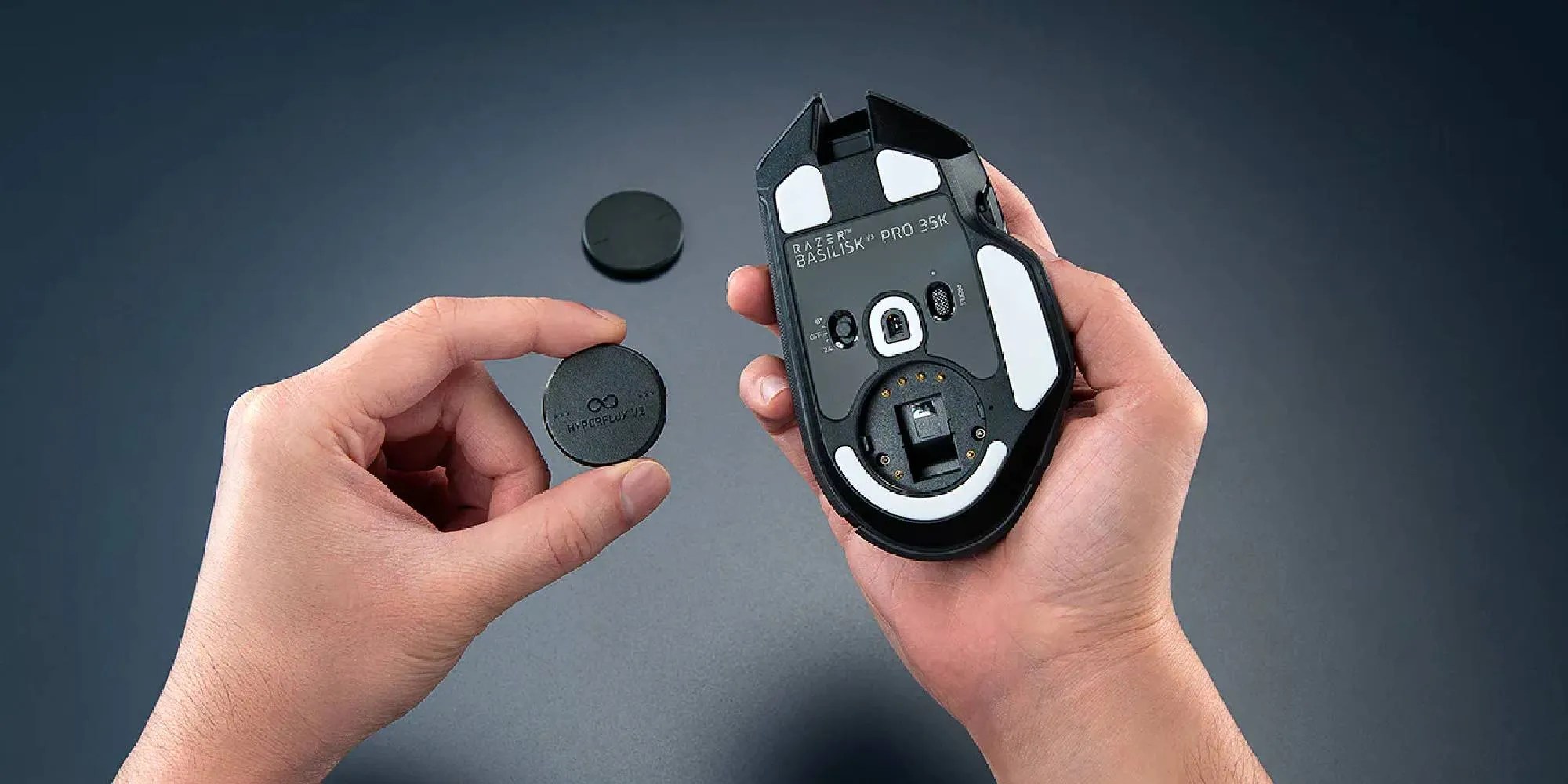Wireless charging is one of those things that has been around for years but still hasn’t fully caught on. I myself have dipped my toes into the world of wireless here and there, but I always end up going back to the tried and true USB cable.
But I’ve once again been tempted back into the wireless charging life byRazer’snew and improved HyperFlux V2 - a mouse pad that’s not just a wireless charger, but a whole wireless charging system.

Using it has made me realize the trick to good wireless charging is just stuffing it in a surface I already use, like a mouse pad. While I’m slightly turned off by how much the HyperFlux pushes you into a closed Razer ecosystem, I’m pretty confident this is the first wireless charger that will have a permanent place on my desk.
Plug It In And Forget All About It
The wireless chargers I’ve used in the past have always been a little tray or dock you have to place your devices on. They use up a port, take up room, and require you to remember to use them, so I’ve never really understood the point. I have limited room on my desk as it is, so adding a device to dock my mouse every night never seemed worth the real estate when a cable works just fine.
The HyperFlux is such an obvious solution, I’m surprised it took so long for someone to do it. With wireless charging built right into the mouse pad, your mouse is always charging. It’s charging when you walk away from your computer, and it’s chargingwhileyou’re using it. To protect the health of the battery, the HyperFlux keeps your mouse between 60-80 percent charged at all times (this range is adjustable), and once you plug the mouse pad in, you never have to charge your mouse again.

It’s also a great mouse pad. It comes in both hard and cloth. I’m testing the hard version, and the glide is impeccable.
It doesn’t seem that revolutionary, but it’s one of those things that’s worth the investment just for the one percent of your mental load it frees up. I’ve been off wired mice for decades, but as a consequence, I’ve found myself with an inconveniently dead mouse on more than one occasion. Just having the peace of mind that that will never happen again has made me a fan of the HyperFlux.
The Bells And Whistles
The HyperFlux is both a charger and wireless receiver for your mouse, so not only will it keep your mouse charged, it will also give you a flawless connection to your PC, freeing up one USB port. Of course, the mouse pad takes up its own port, but that’s where the system part of wireless system comes into play. Not only can it receive the wireless signal from your Razer mouse, it can also link up with your wireless keyboard. Now you’ve freed up two USB ports and created a cleaner, cable-free setup for your desk.
The HyperFlux can’t charge your keyboard, unfortunately, but you’re probably only charging your keyboard once every few months anyway.
Notice I saidRazermouse and keyboard. My one complaint about the HyperFlux is that it is only compatible with Razer devices. That goes for both wireless connection and charging. Unlike virtually every other charging pad, you won’t be able to charge your phone or any other wireless charging devices on the HyperFlux. The system is undeniably cool, but it creates a bit of a walled garden for Razer that I’m not fond of.
What’s worse, onlysomeRazer mice are compatible. The HyperFlux comes with a charging puck that needs to be inserted into the base of your mouse, and the Basilisk, Cobra, and Naga are the only mice that can take it. Those are three great mice that each appeal to a different audience, so you’re not without options, but if you have a preferred mouse, even if it’s another Razer mouse like the ultralight Viper, you’re out of luck.
The DeathStalker and BlackWidow are the only keyboards compatible with the HyperFlux.
The benefit of this limited compatibility is that the HyperFlux is entirely plug-and-play. With your old wireless dongles unplugged, the HyperFlux automatically finds and connects to your mouse and keyboard. This goes back to the convenience factor, which is the HyperFlux’s real strength. No tricky set up, no swapping to charging mode or managing cables, and no fear of your connection getting interrupted - plus you get a USB port back in the process. My space is cleaner and my mind is freer, which is exactly what technology should be doing for us.